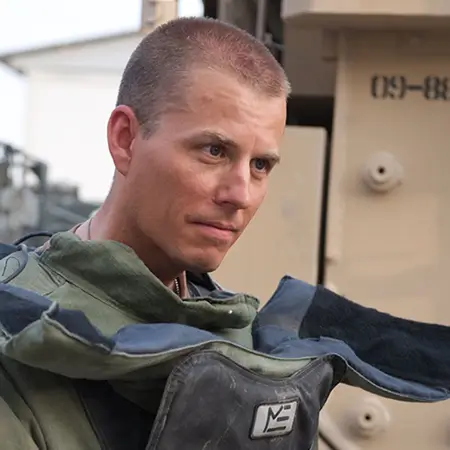Foreword: Sir James Everard
The Armies of the Five Eyes were long engaged in several complex conflicts, primarily in Afghanistan and Iraq. These operations demanded the highest levels of commitment from our serving members. Young women and men around the world joined the armed forces despite the risks, not only because of the worthiness of the cause, but because of the challenge and opportunity available at an individual and collective level.
These challenges demand a significant amount of commitment from those who have chosen to serve their nations in uniform. We should all admire their resolve, resilience and professionalism – and never doubt their courage.
However, we all move on. At some stage everyone leaves the Armed Forces, and this departure marks a stressful time for veterans. The evidence shows that as they weigh up their options for the future, many face difficulties finding long-lasting employment with genuine growth opportunities.
Employers appreciate the core values our soldiers live by – courage, discipline, respect for others, integrity, loyalty and selfless commitment – but they are often overlooked because their true potential cannot be captured on a one-page CV that too readily focuses on academic qualifications and past work experience.
For those organisations willing to look beyond traditional hiring requirements, and focus instead on the unique perspective, experience and skills veterans bring to the table, there has never been a better time to implement a veteran hiring program.
Across the globe, organisations are struggling to find and recruit people with the technological skills needed to meet the demands of the digital age. If they are bold, and look with fresh eyes at their workforce planning, they will discover that many of the roles they so badly need to fill do not always require someone who is already ‘qualified’.
It is amazing how much untapped talent exists within the veteran community. And we know that with as little as 150 hours of self-paced training, many veterans can acquire the knowledge needed to fill a critical skills gap, and then grow stronger over time.
The evidence? Research conducted by WithYouWithMe through their aptitude testing of more than 9,000 veterans worldwide found on average, they score higher than the general population in both numerical reasoning and digit symbol coding – traits correlating with the ability to interpret and draw conclusions from data. In our modern, technology-driven job market, these skills are in high demand for Software Engineers, Cyber Security Analysts and Data Analysts.
The purpose of this guide is to provide a playbook not only for hiring veteran talent, but to ensure ex-servicemen and women realise their full potential within your organisation. This is a win-win. Employers benefit by accessing a capable, loyal and underutilised pool of talent (while also making an enduring positive impact on the veteran community) and veterans gain the chance to build a new career in an exciting world ripe with opportunity.
Sir James Everard KCB CBE
General (retired) and Ex-Deputy Allied Supreme Commander NATO
After commanding at every level – including the Queen’s Royal Lancers, 20th Armoured Brigade, 3rd (UK) Division and the UK Field Army – James Everard ended his military career in September 2020 as the Deputy Supreme Allied Commander Europe. Now he is President of ABF The Soldiers’ Charity, a Lead Senior Mentor for NATO Allied Command Operations and a global advisor to WithYouWithMe.
Contributors
This guide was developed by
WithYouWithMe alongside ex-service men and women and veteran employers from our global network. Each of our contributors has firsthand experience with the triumphs, challenges and everyday realities of transitioning from the armed forces to the civilian sector.
Their input was invaluable in creating a resource that is meaningful for both employers and the people whose careers they support.
Thank you

The Royal Scots, The Royal Regiment of Scotland and the Royal Canadian Regiment
Over a 23-year military career, Derek Dobson served around the world in multiple command appointments on several military deployments. He moved to Canada in 2006 and was one of the founding members of the Scottish Society of Ottawa. Alongside his day-to-day role as Leader of Microsoft Canada’s Defence, Intelligence, Public Safety and Justice business, he is a passionate advocate for veterans and volunteers with True Patriot Love and the Treble Victor.

Rear Admiral (retired),
Royal Navy
Jim Macleod joined the British Royal Navy as a Weapons Engineer Officer in 1989. His subsequent military career spanned operational roles including equipment capability procurement, defence strategy and policy, digital transformation and strategic HR. Until March 2022 he was Assistant Chief of Defence Staff Personnel Capability and Defence Services Secretary, with responsibilities including driving HR policy for 150,000 service women and men across the Royal Navy, Army and Air Force.

Ex-Sailor,
Royal Australian Navy
After an impactful career in the Royal Australian Navy, Jacinta Harmer transitioned into law. As a dedicated Solicitor at Operational Legal Australia Pty Ltd, she specialises in criminal, family, administrative, human rights, and personal injury law, with a focus on representing current and former Australian Defence Force veterans including in the Royal Commission into Defence and Veteran Suicide.

Major General (retired),
British Army
Rupert Jones spent three decades serving in the British Army in varying capacities including commanding on overseas operations in Northern Ireland, Bosnia, Iraq, Afghanistan, Syria and the Carribean. He also worked with multinational and inter-agency teams in several challenging and complex crisis situations, including serving as Deputy Commander of the US-led coalition to defeat ISIS in Iraq and Syria.
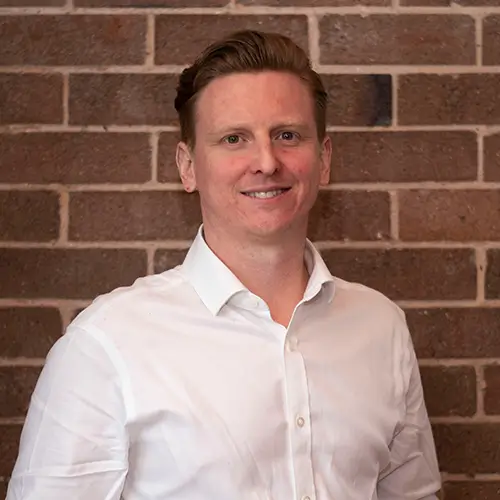
Ex-Captain,
Australian Army
WithYouWithMe CEO Tom Larter had a distinguished 13-year military career in the Australian Army. In 2017, he transitioned to the private sector and became one of the early leaders at WithYouWithMe. Now, as CEO, he works closely with government, defence and industry to solve workforce challenges and make a positive impact on diverse communities including veterans and military spouses.

Ex-Multimedia Technician, Australian Army
This guide’s graphic designer, Jessica Haines-Hann left a 14-year career in the Australian Army to join WithYouWithMe. As Brand and Design Manager, she leverages her defence background to create compelling designs and manage marketing and communications projects across Australia, the UK, USA and Canada.

Ex-Psychological Practice Manager, Australian Army
For six years, Rebekah Nugent served in the Australian Army Psychology Corps providing mental health and organisational psychological support to serving ADF members. After leaving service she joined WithYouWithMe where she’s interviewed and provided career guidance and support to more than 1,200 veterans from around the world.

Ex-People Operations Manager, Australian Army
Over 18 years spent serving in defence personnel management, Sophie Thompson developed a comprehensive understanding of Army’s internal people processes and the experiences which ultimately shape individual’s lives after leaving. Now as Marketing Manager at WithYouWithMe, Sophie draws on her experience to build compelling campaigns that encourage people from diverse backgrounds to enter the tech sector.

Ex-Task Force Commander, Canadian Army
A combat veteran of two decades and an experienced practitioner of digital transformation, Caleb Walker joined WithYouWithMe’s Canadian business as Country Manager in 2020. Now as Senior Vice President of Strategic Development, he builds partnerships with leading government, defence and industry organisations, enabling them to hire and train diverse talent from underrepresented communities.

Barrister, Sir Anthony Mason Chambers
Jordan, a versatile barrister, practices law in the Supreme Court of NSW, the Federal Court of Australia, and various lower courts. He actively contributes to the Royal Commission into Defence and Veteran Suicide, offering valuable insights on legal issues impacting veterans. Jordan collaborates extensively with Operational Legal Australia and is recognised for his strong support for veterans and pro bono work.

Ex-British and Australian
Army officer
Garrath Williams served for more than 17 years in the British then Australian Army. He has since become a vocal advocate for improving the lives of veterans, particularly seeking to reshape the narrative around veteran employment. In recent years, Garrath has been the driving force behind JobOppO, a UK-based veteran employment community, as the Director of Veteran Engagement and Development.

WithYouWithMe is a veteran-founded social impact company using technology to solve underemployment for veterans, their families and other overlooked communities by providing them with free access to aptitude testing, digital skills training and job matching opportunities with leading employers. WithYouWithMe's Potential platform is used by more than 22,000 veteran jobseekers worldwide.

The untapped potential of the veteran workforce
Implementing a veteran hiring program is not just a noble gesture; it's a strategic decision that can greatly benefit any organisation willing to recognise that how people think is often more important than what they've done.
Highly motivated, conscientious and loyal, veterans bring a unique set of qualities and experiences to the civilian workforce which make them an invaluable asset to any team. But beyond their military training which instils leadership, discipline and a mission-focused mindset, veterans also demonstrate a high propensity for developing sought after skills.
In a first-of-its kind study into veteran aptitude for the Information Technology industry, WithYouWithMe analysed two years' worth of psychometric and aptitude data from the testing of the more than 9,200 veterans across Australia, the UK, USA and Canada.
What we found was that veterans score higher than average in both numerical reasoning and digit symbol coding. From a skills perspective, these attributes correlate with the ability to interpret and draw conclusions from data, understand and recognise coding patterns and use logical reasoning to solve problems.
More than 50% (53.41%) of veterans also score highly in recognition memory, the ability to identify previously encountered events, objects or people. This plays a significant role in the process of understanding new concepts and applying transferable skills.
Based on aptitude and personality type, Veterans were most commonly matched to careers in project management, operations and cyber security response, a result of their existing skills in managing complex situations and problem-solving under pressure.
For any organisation working in the defence sector, or any sector where employees handle sensitive information, veterans are also the largest source of security cleared talent.
Unfortunately, many organisations are yet to realise the benefits of hiring veterans, and they remain one of the most underemployed groups in society.
of medium and large organisations would consider employing veterans,
but only
would employ someone with no industry experience. 1
In Canada, a study of more than 2,000 veterans and soon-to-be veterans indicated that a
when finding employment post-service. 2
In the UK,
there are around
700,000
veterans in employment but over half of them have jobs in low paid or routine occupations that don’t make use of their full skills. 1
In the USA, Veterans are 15.6% more likely to be underemployed than nonveterans. 3
In Australia, Female veterans take 1.6x longer to find a role post service than male veterans. 4
1. Veterans work: Recognising the potential of ex-service personnel,
Deloitte, 2016
2. Veteran transition advisory council: Final report,
True Patriot Love, 2017
3. Veteran opportunity report: Understanding an untapped talent pool,
LinkedIn4. Australian veteran opportunity report: No veteran left behind,
LinkedIn, 2019
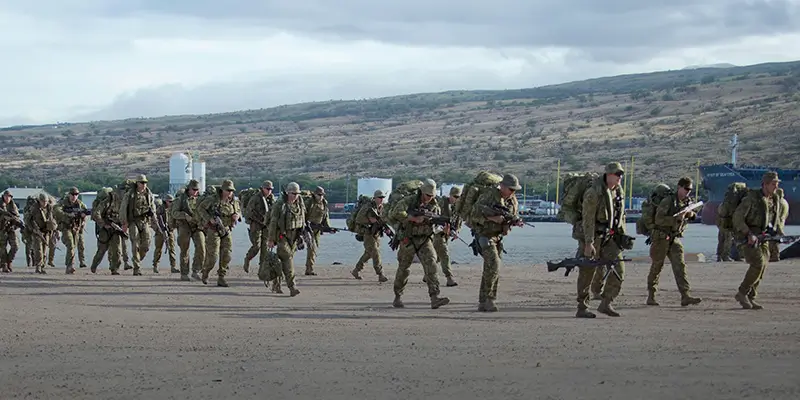
Attracting and recruiting veteran talent
By Sophie Thompson
Regional Marketing Manager, WithYouWithMe
Effectively reaching and appealing to the veteran talent pool requires a thoughtful approach that goes beyond simply stating that you welcome veterans to apply. Getting that message out there is an essential piece of the puzzle, but there are several other strategies you can adopt to attract and recruit veteran candidates.
- Engage with your local veteran community: Participate in veteran job fairs and local events to engage with individuals from the military community in person and gain a deeper understanding of their career aspirations. By being actively involved in these events, you'll establish a strong presence and demonstrate your dedication to hiring from this community. The power of word-of-mouth recommendations will also naturally promote your program and enhance its visibility.
- Seek out partnerships: Consider collaborating with existing military transition programs, non-profits or government agencies to tap into or advertise across their networks. Partnering with a known entity in the veteran community will help legitimise your program and make it more accessible.

The 15,000 Futures initiative calls upon UK employers to help ex-service men and women find meaningful employment by offering them the opportunity to undertake digital roles. The initiative has already garnered widespread support from leading organisations including Capita, Leonardo, Atos, Northrop Grumman and Leidos.
- Write veteran-friendly job postings: Making some minor changes to your usual job postings can make them more appealing to veteran candidates. Firstly, emphasise the importance of soft skills relevant to the role, like teamwork or strategic problem solving, and highlight any transferable skills veterans may have acquired in a military context. Secondly, ensure posts use direct, jargon-free language so candidates aren’t put off or confused by unfamiliar terminology. Thirdly, highlight if you offer on-the-job training as this demonstrates a willingness to invest in candidates and lastly, make it clear that the company is committed to hiring veterans and actively inviting them to apply.
A survey of more than 300 veterans across WithYouWithMe’s global network identified the biggest barrier faced by ex-service people transitioning to civilian work was matching their skills and military role to the civilian equivalent.
WYWM LinkedIn Survey, 2023
- Offer on-the-job training opportunities: Consider developing training or mentorship programs geared towards helping veterans bridge technical skills gaps. Military leavers are used to rapidly upskilling in new areas and are often eager and fast learners as a result. Investing in training programs will not only see your new hires grow their capabilities but will also help them seamlessly adapt to the civilian work environment.
When asked what they look for most in an employer, veterans identified the top drawcard to be career development (32%) closely followed by flexibility (28%).
WYWM LinkedIn Survey, 2023
- Shout about your veteran employment program: Announce your program publicly and ensure you’re creating online assets, such as website pages, social media posts and advertisements to raise awareness. Servicemen and women considering a career change will be searching ‘jobs for veterans’ online months before they leave. Make sure you’re one of the first options they see. Your online marketing strategy should also include reaching out to social media groups and pages which cater to veterans and their families.
- Join veteran hiring initiatives: Sign pledges and engage in veteran employment initiatives. Showcase these affiliations in your communications and highlight them in job postings to signal your dedication to expanding veteran employment.

Launching an impactful veteran hiring program
Around the world, talent is in high demand. The era of AI and automation has arrived, and the nature of work is changing rapidly. Traditional university degrees and training mechanisms are struggling to keep pace with technology and the value of soft skills – creative problem-solving, adaptability and effective communication – is on the rise.
Deloitte Access Economics forecasts that soft skill intensive occupations will account for two-thirds of all jobs by 2030, compared to half of all jobs in 2000.
Soft skills for business success, Deloitte Access Economics, 2017
In this new era, ex-service men and women who have spent their careers operating efficiently in fast-paced, high-pressure environments represent one of the largest untapped talent pools, one which utilised properly can drive organisational value far beyond diversifying the workforce. However, establishing a veteran hiring program requires a considered approach, one that accounts for the unique experiences and needs of veteran candidates.
Step 1: Obtain leadership buy-in and support
Creating a veteran hiring program requires dedicated time and effort from multiple teams. Human Resources departments might be called upon to alter their hiring processes or Marketing teams might be engaged to promote the program. Rallying these efforts requires support from leadership.
There are several ways to engage leaders with your veteran hiring program, including but not limited to:
- Sharing knowledge: Demonstrate the value of establishing a veteran hiring program through research and insights on the unique strengths of veteran talent.
- Showcasing success: Share case studies where leading organisations have built veteran hiring programs that positively impact their businesses.
- Highlighting DE&I benefits: Discuss how leaders are approaching diversity and inclusion, highlighting how a veteran program can set the tone for your organisation both internally and externally.
- Leveraging internal advocates: Find those within your organisation who are veterans or have close ties to the veteran community, have them advocate for the development of the program.
Step 2: Prepare your organisation to employ veterans
Before you begin bringing veteran talent into your organisation, it's important to ensure that your workplace, processes and culture are welcoming and inclusive for veteran candidates.
Actions to establish a veteran-friendly culture might include:
- Sharing your plans to launch a veteran employment program: Tell your workforce about your new hiring program, highlighting what it means for your organisation and the value it will bring to your teams.
- Conducting sensitivity training: Consider providing sensitivity training for existing employees. This will help them better understand the challenges veterans face transitioning into a civilian workplace and dispel common misconceptions.
- Enabling flexible working arrangements: Some veterans may face difficulties with mobility or are required to attend regular medical appointments. Enabling options for flexible working can make these barriers easier to manage.
- Checking accessibility: Ensure your physical workplace is accessible for individuals with disabilities.
Step 3: Let veterans know
Unless they come across the right job posting, veteran candidates may not know your organisation is looking to hire them. Announce the launch of your veteran employment program and be clear and vocal about the kinds of candidates you intend to hire through social media, events, advertising and media announcements.
Connecting with ex-service organisations and local veteran community groups is also a great way to raise awareness amongst veterans and current serving members considering civilian career options.
Total Australian veterans on the Potential platform:
13,761
Total UK veterans on the Potential platform:
3,296
Total Canadian veterans on the Potential platform:
7,383
Globally, WithYouWithMe has over 24,440 veterans signed up and seeking jobs. 6,756 are currently enrolled in training and 3,714 have graduated - job ready.
If you're looking to hire veterans into your organisation now, reach out to us.
Start hiring nowLegal considerations for veteran recruitment
By Jacinta Harmer and Jordan Widjaja
Solicitor, Operational Legal Australia and Barrister, Sir Anthony Mason Chambers
The following legal information is specific to Australia, however it’s important to note that the other countries of the Five Eyes (FVEY) Alliance share the same commitment to protecting the employment rights of military veterans. While the general principles are similar, differences exist in the specific details and mechanisms of protection. Please ensure your organisation is acquainted with the laws and considerations applicable to your country.
Employers who are wanting to engage veterans should be aware of their legal obligations. While many apply generally to all employees, there are specific things to keep in mind when it comes to employing veterans.
Reservist veterans are afforded several employment protections under the Defence Reserve Service (Protection) Act 2001 (Cth) (DRSP Act). Particularly, it prohibits discrimination wholly or partially by reason of their defence service (which includes training, and any other activities undertaken as a member of the Australian Defence Force). For example, you may be committing a criminal offence by dismissing or failing to make an offer of employment to a veteran for their previous, current or future defence service. Hindering a veteran from participating in defence service is also a criminal offence.
The DRSP Act also contains provisions entitling veterans to be absent from work and prohibiting employers from requiring veterans to take “leave” (paid or unpaid) while undertaking defence service. While an employer is not required to pay a veteran their regular salary while undertaking defence service, some employers may choose to do so. Additionally, veteran reservists have a right of resumption of their employment after completing their defence service. It is recommended that a leave policy be developed so that the employers and employees to avoid later disagreements or misunderstandings and enable veterans to smoothly transition back into civilian life.
Employers should keep their obligations under both State and Commonwealth antidiscrimination laws in mind. Veterans, like the general population, come in all shapes and sizes, and sometimes with mental and physical injuries. The uniqueness of service in the ADF means that these injuries may be more prevalent amongst veterans. In short, employers are prohibited from discriminating in employment by reason of a person’s disability, unless notwithstanding reasonable adjustments, and the ‘inherent requirements’ of the role cannot be fulfilled. For example, it may be discrimination to not offer a veteran with a serious permanent back injury a desk job if a sit/stand desk was a ‘reasonable adjustment’ that could be made. However, if the same veteran was applying for a job as an airline pilot required to sit for extended periods of time in a cockpit without an ability to safely sit and stand, then not offering the job is likely not discrimination, as the ‘inherent requirements’ of the job cannot be performed.
Usually, many veterans have engaged with the Department of Veterans’ Affairs, (DVA) however some veterans may have also engaged with the National Disability Insurance Scheme. Both schemes may have rehabilitation coordinators, who may be able to assist in discussions when supporting veterans with reasonable adjustments. Furthermore, veterans who have recently transitioned from the Australian Defence Force may not be aware of the supports available to them within the civilian workforce and it is encouraged that these open discussions about support take place.
Finally, it is important to remember that many veterans, particularly those that may deploy or have deployed to sensitive areas of operation, could become targets for retribution or demeaning treatment by others for their service in defence. It is imperative that employers respect veterans’ privacy and keep confidential any information about veterans’ service or health conditions. Any disclosures to other employees, colleagues or the business, should be strictly limited and where possible done in discussion with the veteran. Privacy laws should be adhered to in these circumstances. Likewise, some veterans may be legally prevented from discussing aspects of their service as it may be a breach of national and/or international security. Both employer and the veteran should keep this in mind.
An employer may be eligible for financial assistance which can alleviate some of the costs involved with releasing reservist veterans for defence service. Further information and support can be obtained through ADF Reserves and Employer Support on 1800 333 362. As with all employment relationships, both an employer and employee must understand their legal and contractual obligations to each other and should seek legal advice as needed.
Operational Legal Australia are the only veteran-owned law firm in Australia providing both legal and non-legal services and specialist advice across a range of areas related to veterans' affairs.
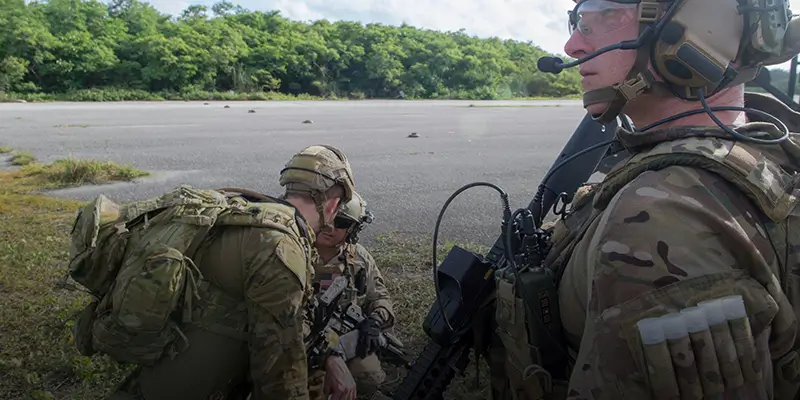
Interviewing and hiring with inclusivity in mind
By Rebekah Nugent
Global Delivery Lead, WithYouWithMe
While the process of interviewing and hiring veterans is essentially the same as with any other candidate, there are some adjustments you can make to better identify the skills, experience and potential a veteran can contribute to your organisation. Whether it's asking the right questions or being open to outside-the-box answers, interviewing with inclusivity in mind will ensure you don’t overlook top talent.
- Establish a fair and unbiased screening process: In many instances, hiring bias starts with the initial screening process where people are assessed based on their university credentials or a one-page CV. Taking this approach will immediately see many talented veteran (and other diverse) candidates be overlooked as they don’t fit the ‘traditional’ mould. These biases can be mitigated by incorporating other screening methods such as psychometric and aptitude testing which can identify people with the innate skills required to perform a role.
- Initiate contact with a phone call: Where possible, initial outreach to a veteran candidate should be made over the phone. People less experienced in navigating the civilian job market will place far more value on a direct conversation than an email.
- Enable online interviews: Veteran candidates who have recently left service or are still in the process of leaving could be experiencing a very different set of circumstances to your typical job seeker. Enabling virtual screening processes and phone or video interviews will ensure your hiring process is both inclusive and accessible, regardless of a candidate’s current location, external time pressures and physical abilities.
- Understand their military background: Take the time to review candidates’ profiles and identify their service and role within the military. Recognise that there are significant distinctions between the Army, Navy and Air Force, with roles within each service encompassing a broad range of responsibilities. Engage candidates with straightforward questions such as, "I see you served in the Air Force; could you share some achievements from that time?" This not only demonstrates your genuine interest but also creates a comfortable space for veterans to share insight on their military background.
- Create opportunities to translate military experience: Understanding a candidate’s previous role will also help you identify transferable skills relevant to your organisation. If a veteran is new to the civilian workplace, they may not know exactly where their skills fit, so creating opportunities to showcase them is essential. Asking questions focused on soft skills like communication, teamwork or time management can help unlock deeper insight into their capabilities. For example, “Think of a time when you didn’t agree with an approach proposed by a colleague to complete a task. How did you address your concerns?”
UK online veteran community, JobOppO, has a
skills translator designed to help non-military organisations understand British Army roles, ranks and skill sets. With titles and ranks similar across the Five Eyes, this translator can help you understand the types of skills developed across all levels of the military.
- Ask for clarification: When veterans are explaining past roles or experience, don’t be afraid to ask for further information on what a role or word means. They want to share their background with you and asking questions will help them do so effectively.
- Be direct in your questioning and expect a direct answer in return: In the military, clear chain of command and a mission-focused mindset are deeply ingrained. This often translates into a communication style that is straightforward and mission oriented. Veterans are trained to prioritise a mission's success over personal opinions, thoughts or feelings, which can make them less forthcoming. Be aware of this trait and shape your line of questioning accordingly. If you are eager to capture their personal thoughts, ask directly for them.
- Consider alternative methods for verifying competency: Rather than relying solely on an interview process to verify competency, consider setting a practical work task for candidates to complete. Doing so will allow them to demonstrate their skill set against actual role requirements, rather than focusing on interpersonal communication skills. This approach offers a more nuanced and practical evaluation of competency, bridging the gap between theoretical knowledge and its application.
- Present a clear hiring roadmap and maintain regular contact: Conclude each interaction by providing clear next steps, including any further action you require the candidate to take, and a timeline. This is the best way to remove ambiguity and provide a good interview experience for all involved, even if the candidate is unsuccessful. Maintaining regular contact via email or over the phone will reduce stress and ensure veterans remain engaged with the hiring process.
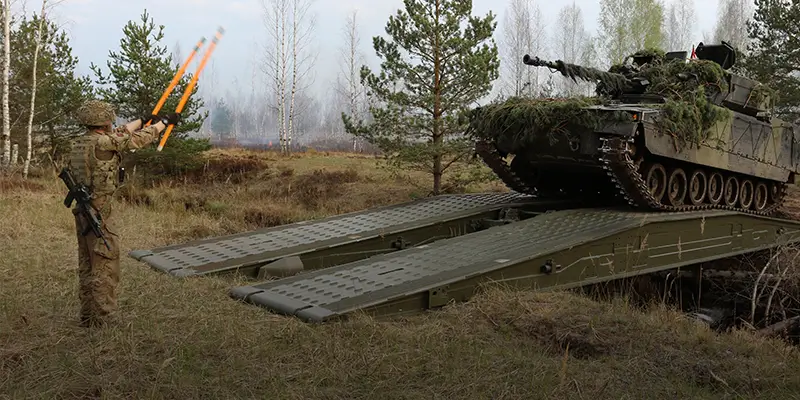
Onboarding veterans: Bridging the military-civilian divide
By Garrath Williams
Director of Veteran Engagement and Development, JobOppO
At JobOppO, we ran a survey with our veteran community to better understand the challenges and opportunities experienced during their transition. What we found was that 73% of respondents had moved on from their initial post-military role within the first three years.
Past research with our employment partners had also shown 57% of organisations offered minimal or no onboarding and transition support to veterans joining their workforces. We identified this as one of key factors contributing to the early turnover of veteran employees.

JobOppO is a UK based, members only, veteran employment community that connects veterans and service leavers with employment partners who recognise and appreciate the unique skills and knowledge veterans hone during service and beyond.
Drawing on our research and feedback from our network, we began working closely with employment partners to support the creation and delivery of more robust support programs during the onboarding phase. Below is what we deem the most valuable advice for successfully integrating veterans into the workforce and helping them build sustainable and long-lasting careers.
- Set realistic expectations: Recognise that transitioning from military service to civilian employment typically requires a notice period of 12 weeks. This timeframe may be shorter or longer in cases with mitigating circumstances or if the candidate opts for a period of leave. As an employer, it's essential to remain flexible, acknowledging the bureaucratic nature of military service. This includes appropriately forecasting job positions and their start dates.
- Develop a clear onboarding plan: Veterans are accustomed to structure, therefore providing incoming candidates with a detailed plan as early as possible in the onboarding process will allow them to allocate sufficient time and preparation to successfully transition into their new role. For those who have been discharged on medical grounds, it’s important to also consider their ongoing care plan and how this might impact onboarding processes.
- Welcome their support network: Encouraging family and support network involvement through information sharing or family-oriented events, will be invaluable. As a service member transitions to civilian life, it has a profound impact on their entire family, influencing their dynamics and well-being.
- Consider veterans’ novice civilian status: Veterans transitioning into their first post-military role may be experiencing a civilian work environment for the first time. Some may take time to grasp the day-to-day, including the nuances of terminology, job roles, corporate leadership and team dynamics.
- Assign a mentor: The tribal nature of the military is missed by many when they leave. Employers can alleviate this by connecting new candidates with existing veteran and military family employees or introducing them to a dedicated mentor. This ‘mateship’ provides an additional layer of support to help the newcomer adapt, ask uncomfortable questions and navigate the challenges of civilian work.
- Allow for reasonable accommodations: Understand that every veteran's situation can differ, and their needs vary. Be prepared to offer reasonable accommodations tailored to individual circumstances. This might include adjusted work schedules, remote work options, or temporary workload modifications to accommodate medical appointments and recovery.
- Play to their strengths: Veterans will learn fast, move fast and have been trained to do so with confidence, particularly if placed in a leadership role. They will be mission-focused and need to understand their part in the broader strategic vision. Where possible, communicate the purpose behind assigned tasks and how they align with larger projects or business goals.
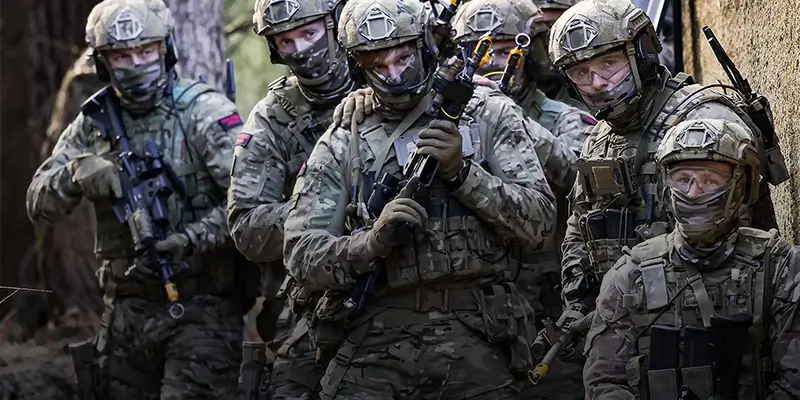
Retaining and advancing veteran talent
By Derek Dobson
Defence and Federal Public Safety Leader, Microsoft Canada
Veterans tend to exhibit strong loyalty to their employers, a valuable trait which, when nurtured, can yield tremendous benefits. In the military, loyalty is reciprocated through transparency, a clear career path and robust support structures.
To retain, empower and advance veteran talent within your organisation, consider the following:
- Provide transparent career progression pathways: Emulate the military's transparent approach by being clear about what it takes to advance in your organisation. Providing veterans with a well-defined roadmap for career growth and making sure they understand the steps required for promotion will help them remain focused and rise to the challenge.
- Create veteran resource groups: Encourage the formation of internal support networks where veterans can connect, share experiences and benefit from peer-to-peer mentorship. This will reinforce their sense of belonging and help them better connect with your organisation’s culture.
- Offer pathways for skill enhancement: Collaborate with your veteran employees to create individualised career plans that align with their professional aspirations. Offer training programs to enhance their civilian skill set and prepare them for higher-level roles. Identify those with leadership potential and nurture them through professional development.
- Connect day-to-day tasks with an overarching strategy: In the military, every task or mission is connected to a singular purpose – the defence and protection of the nation. Leaving this purpose-driven environment sees some veterans struggle to find meaning in their civilian careers. Explaining how each task contributes to achieving team goals, and your organisation’s overarching business strategy, will help veterans remain engaged in their role and focused on completing the task at hand.
- Provide frequent and detailed feedback: In line with military values, create frequent opportunities to deliver and receive detailed feedback, particularly during the early stages of employment. Establishing a culture of open communication will help your veteran employees adapt to work requirements and enable their managers to provide effective support.
- Conduct detailed exit interviews: If a veteran employee does decide to leave your organisation, ensure you conduct an exit interview to understand their motivations and identify areas for improvement in your retention strategy. In many cases, factors influencing their departure are beyond your control, but their feedback can help enhance your programs and provide insight for additional support measures.
This adoption of a military-inspired approach not only benefits veterans but also cultivates a workforce culture that prioritises growth, collaboration and inclusivity, factors which will bolster your organisation’s resilience and overall appeal in a competitive job market.
Second career success stories from ex-servicemen and women
Carly Owens
Royal Australian Air Force (RAAF) veteran turned Information Security Specialist at BAE Systems
Carly Owens is an Australian Air Force veteran and military spouse who had to move eight times in twelve years with her family. She had been working casually in retail jobs during this time. These jobs offered flexibility but fell short of her career aspirations.
After a recommendation to sign up to WithYouWithMe, Carly successfully completed the AWS Cloud Practitioner course and was offered a short work assignment with Accenture. Following this foundational experience, she was offered an interview with defence technology powerhouse BAE Systems Australia.
WithYouWithMe helped Carly complete further upskilling in cyber security and helpdesk analytics before she commenced the role at BAE Systems in February 2022. She’s now the leader of a BAE Systems ‘Technology Squad’ and works as an Information Security Specialist. Carly has thrived in her role as BAE Systems Team Leader as it has given her the space to grow as a leader and mentor her squad as they collaborate on new projects, do their best work and achieve goals.

“The IT Security industry is dynamic, fast-paced, and has a wide range of practical applications. I really enjoy my work and love working with BAE Systems. I’m motivated to exceed expectations in my position at BAE Systems and appreciate the value of learning current information security skills while keeping up with current technology developments.”
Leighton Gosai
British Armed Forces veteran turned Senior Cyber Security Consultant at Leonardo
Growing up, Leighton spent a lot of his time in uniformed organisations including the Beavers, Cubs, Scouts and various Cadets. As soon as he was old enough, he joined the Metropolitan Police. After a few years on the force, Leighton longed for more adventure, signing up as a Rifleman in the Royal Green Jackets.
Leighton was medically discharged in 2009. In between odd jobs including working delivery for Amazon, Leighton began undertaking basic IT qualifications including completing WithYouWithMe’s GCHQ-accredited Cyber training pathway.
While in training, he attended an event hosted by leading aerospace, defence and security organisation, Leonardo, where they were seeking to hire veterans for their Cyber Division. Off the back of the event, Leighton secured a role as a Senior Cyber Security Consultant. This new role has afforded him the invaluable opportunity to work on significant security projects in the defence space and continue building his skills across all areas of cyber.

“The level to which Leonardo invest in your training and development is incredible. It’s so refreshing to see a company that recognise the more skills, knowledge and experience a person has, the more value they can bring to the company – and then act on that principle.”
Daren Kraus
RCAF veteran turned IT Analyst, Infrastructure Operations for the Royal Canadian Mounted Police (RCMP)
Daren joined the Canadian military in 1989 and spent a decades-long career posted mostly at air bases throughout the prairies and Ontario. He left active service in 2016, transferring to the Reserves and taking up a Photojournalist position at 17 Wing Public Affairs.
When he left the Reserves in 2020, Daren began planning his next move, commencing a Graphic Communications course at a local college and looking for roles in his former trade. After receiving a yet another rejection letter for a Photojournalist position, he decided to explore career opportunities in the tech sector.
After completing some online training courses in cyber security, data analytics and IT service delivery, Daren was offered a contract with the RCMP as part of EY’s Cyber Workforce Enablement Program (CWEP) – a program which places veterans into careers with the Canadian Government.

“CWEP presents a great opportunity for personnel getting out the military to find new careers. Many of the military trades don’t clearly translate into civilian roles and CWEP provides veterans with training and gainful employment opportunities in tech. What we lack in IT experience we make up for with our leadership, determination and can-do attitude.”
Total Australian veterans on the Potential platform:
13,761
Total UK veterans on the Potential platform:
3,296
Total Canadian veterans on the Potential platform:
7,383
Globally, WithYouWithMe has over 24,440 veterans signed up and seeking jobs. 6,756 are currently enrolled in training and 3,714 have graduated - job ready.
If you're looking to hire veterans into your organisation now, reach out to us.
Start hiring nowLeading global examples of successful veteran programs
Recent years have seen many large global organisations, especially those that operate in the defence sector, become increasingly cognisant of the critical role they can play in improving employment outcomes for veterans. Building truly meaningful careers after service is one of the biggest challenges veterans face, and the willingness of these organisations to open their doors and make a conscious effort to build genuine career pathways has resulted in a much-needed global shift.
In an age of increased awareness and appreciation for the unique skills and experiences of military leavers, many highly effective employment programs have emerged on the global stage. These programs not only bridge the gap between military life and civilian employment but also unlock the immense potential that lies within our veteran community, proving that their talents and contributions are vital assets to the workforce.

Defence powerhouse BAE Systems has a long history of actively recruiting and supporting veterans to join their global workforce, offering comprehensive onboarding, training and career development opportunities. Around the world, their programs enable thousands of veterans each year to find meaningful, mission-focused careers in the civilian sector.
In Australia, BAE Systems partnered with WithYouWithMe to hire, train and deploy veteran talent to address digital skills gaps in their workforce. Rather than using traditional hiring mechanisms, BAE Systems sought to find veterans and military spouses with untapped potential then provide them with the training required to fill critical roles across areas like cyber security, systems administration and network engineering.
Through WithYouWithMe’s Potential platform, BAE Systems hired a ‘squad’ of 18 people, focusing on their natural aptitude, personality profile and transferable skills as a measure of capability, rather than their past work experience.
The program has seen great success in enabling veterans and military spouses to develop in-demand digital skills and enter technology-based roles with genuine growth opportunities. BAE Systems’ partnership with WithYouWithMe continues to diversify their Australian workforce while also enabling the development of in-house tech capabilities and fostering a culture of continuous learning.
“This partnership is a win-win as it allows us to provide tailored pathways to veterans looking to work in technology focused roles and enables the company to build a sustainable future through purposeful workforce skilling initiatives.”
Danielle Mesa
Chief People Officer, BAE Systems Australia

As a global leader in defence, aerospace and security, Leonardo houses advanced digital capabilities driven by a highly skilled, productive and innovative workforce. Faced with a modern security landscape characterised by rapid technological change and ever-evolving threats, Leonardo recognised a need to expand its teams in a way that enables diversity of thought, skills and insight.
Leonardo identified an opportunity to address cyber skills gaps by hiring talent from traditionally overlooked pools. Being heavily involved in the defence sector, they saw synergy in expanding their cyber security workforce in a way that would support more military leavers into meaningful employment.
In partnership with WithYouWithMe, Leonardo hired and trained a five-person squad of Cyber Security Consultants including veterans of the British Armed Forces and former Metropolitan Police Officers. Despite not having traditional qualifications or backgrounds in cyber security, the squad members were fast learners.
“The cyber consultants we have deployed who come from a military background bring with them a unique set of skills that are invaluable in the cyber security space including the ability to recognise and mitigate threats rapidly, problem-solve under pressure and work as part of a team. They are fantastic ambassadors for Leonardo.”
Dean Fortt
Cyber and Security UK Head of HR, Leonardo
As an organisation eager to provide services of the highest quality while also delivering a positive social impact, Leonardo is happy to see their workforce benefiting from the transferable skills and insight of veteran talent. Across all areas of its business, Leonardo recognises that having diverse personnel doesn’t only create a more positive working environment, but also enables a higher level of creativity and strategic problem-solving to help them stay ahead of evolving threats.
Read the full case study
Globally approximately 20 percent of Northrop Grumman’s 95,000 employees are veterans including more than 1,600 reservists. When expanding their teams in the UK, the company sought to continue this trend by deploying a proactive approach to bring veteran talent on board, amidst the challenging backdrop of a digital skills shortage in the market.
This new approach would see Northrop Grumman work with WithYouWithme to assess for potential in untapped talent pools – with a focus on the veteran and military family community – and identify those who may be new to a career in tech but have a natural ability to learn it quickly. Individuals identified through this new approach would be upskilled in high-demand areas then deployed into roles with Northrop Grumman.
In 2022, Northrop Grumman hired an initial cohort of ten into the cyber and intelligence business – the biggest business unit in the UK. Roles included Business Analysts, as well as Software and Java Developers, based in both London and Manchester.
One of the new team members, British Armed Forces veteran turned Senior Developer, Babou Jobe says he feels valued at Northrop Grumman because they understand the skills a military veteran can bring to the table.
"Not only do they encourage me to personally develop but also provide me with the resources to build my skills and qualifications to another level,” said Babou.
Northrop Grumman’s underlying mission focus allowed new hires to contribute and integrate from the moment they joined the team and enabled them to engage in defence and security while moving into their second careers.
Sophie Ball, Head of Talent at Northrop Grumman in the UK said, “Diversity of experiences, thought leadership, problem solving, teamwork and resilience are all transferable skills that Northrop Grumman sees evident in veterans.”
"We are passionate about attracting the broadest possible range of people and encouraging diversity of thought, experience and background to help solve our customer’s toughest challenges across space, air, land, sea and cyber globally.
The technology and digital skills divide is one that we are bridging as its key to our mission to secure the UK and our allies’ defence.
Northrop Grumman recognises the value of diversity and works hard to ensure that all our people can bring their full selves to work and so make the most of their skills and experience to build exciting and rewarding careers in technology and innovation.”
Nick Chaffey
Chief Executive, Northrop Grumman UK, Europe and Middle East
The final word: Measuring and celebrating success
Once your veteran hiring program is established, the task remains to measure the effectiveness of your initiatives and demonstrate ongoing value to stakeholders. There are several ways to assess impact, bearing in mind that any outcomes should be linked back to your organisation’s objectives in hiring ex-service men and women.
- Assess impact on company culture: Examine how veteran employees have contributed to your company culture – have they advanced your diversity and inclusion efforts? Or helped encourage more people to participate in mentorship programs?
- Leverage the strength of referrals: Measure the success of your veteran hiring initiatives by tracking a surge in referrals from existing veteran employees. Word-of-mouth endorsements offer insightful feedback, signalling the effectiveness and positive influence of your initiatives. It's a sincere compliment when veterans not only appreciate the workplace but also enthusiastically recommend it to their peers, reflecting a workplace culture that resonates positively within the veteran community.
- Measure ongoing development and retention: Keep track of veteran employees who are welcomed into the program. Compare their progression through the ranks and overall retention rates against that of other employees.
- Capture staff insights on inclusivity: Survey your workforce to capture feedback on the success of your veteran hiring program. In particular, to determine if creating a more inclusive environment is having positive effects on productivity or workplace culture.
- Recognise and celebrate veterans’ contributions: Recognising and celebrating employees is a fantastic (and highly cost effective) way to make people feel valued in the workplace. Make an effort to highlight your new veteran talent and how their unique skills or experience has helped solve a problem or stimulate innovation.
- Tell human stories: Encourage veteran employees to share their stories through internal or external blogs or profile articles. This demonstrates to them, and the broader workforce, that you value their individual backgrounds and acknowledge what their experience brings to the table.
In recognising and realising the untapped potential of the veteran workforce, your organisation can address a moral imperative while also exploiting a strategic opportunity to gain employees with unparalleled dedication, discipline and resilience.
The information presented in this guide underscores the remarkable aptitude of veterans, particularly in high-demand fields like technology, where their adaptability, decisiveness and problem-solving abilities shine.
As we conclude this guide, the call to action is clear. The time is ripe for businesses to look beyond traditional hiring criteria, embrace the wealth of skills veterans have to offer and implement robust and sustainable hiring programs. This is not merely a win-win scenario; it's a blueprint for creating a workforce that thrives on diversity, resilience and shared commitment to a larger purpose.
By embracing veteran talent, we not only elevate individual careers but also contribute to the broader mission of building stronger and more dynamic organisations, well-equipped to tackle the challenges of tomorrow. It is an investment in talent, a salute to service and a pledge to create a future where every veteran can leave service confident in their ability to find not just a job, but a fulfilling and purposeful career.






















